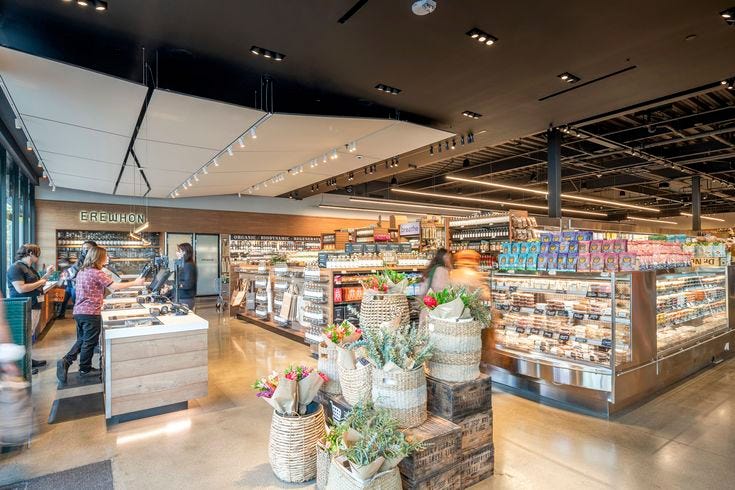I’m Ekam — currently between things, mildly bored, and overly caffeinated — so I figured why not start sharing stuff I actually enjoy?
Before we dive into my fourth post, here’s my story in five words:
Startups. Consumer/Food. Personal Finance. Chess. Arsenal/Soccer (COYG!).
That’s the vibe. If you’re into any of those, stick around.
You did it. You landed your first major retail deal. 100 new doors.
Maybe it’s Whole Foods, Target, or a key regional player. Pop the champagne. This is the dream, right? Hold on…
For most consumer brand founders, the omni-channel path feels like the holy grail:
Start as a scrappy DTC brand and find your audience online.
Land that coveted shelf space in brick-and-mortar retail.
Scale like wildfire and become a household name.
But here’s the truth most founders don’t share:
Going omni-channel is the hardest move in retail.
It’s not just a new distribution channel; it’s an entirely different business.
At Wild Earth, we’ve lived this transformation. We made the jump from a fast-growing DTC pet brand into retail and we were humbled, fast. Retail didn’t just test our margins. It tested our operations, our relationships, and our patience.
Here are the harsh realities which no one talks about:-
1. Retail Destroys Your DTC Margin Math
You might sell your product for $10 at retail. Sounds great, right? Until you break it down:
Retail math operates in a different universe. Here's a typical breakdown for that $10 sale:
Retailer Margin (40–50%): Your $10 becomes $5.50.
Distributor/Broker Fees (20–30%): Your $5.50 is now $4.13.
COGS (30–35%): Let’s say it costs $3.50 to make the product.
Your take-home? $0.63
📉 That’s a ~6% margin—before you factor in your retail team, shipping, or merchandising costs.
💡 Compare that to a 60–70% gross margin in DTC and it's easy to see why many startups go cashflow-negative when they hit the shelves.
I build a brand-new P&L model just to navigate this shift. It forced us to understand our numbers at a granular level and whether it makes sense to partner with a retailer in the first place.
2. Retailers Don’t Care About You (Until You Prove Them Wrong)
Most founders think getting the “yes” from a category manager is the finish line. In reality, it’s the starting gun for a race you didn’t even know you were running.
You’re not just managing a buyer. You're now responsible for your product’s performance in every single store.
Category Managers care about one thing: velocity. Is your product selling faster than the one it replaced? If not, you're out.
Store Managers promote what makes them look good. They don’t have time to learn your brand story.
Shelf-Stockers are your last line of defense, and they’re juggling thousands of SKUs.
We learned this the hard way. Products sat in the back. Stockouts went unreported. Our beautiful packaging collected dust.
What worked? We stopped trying to conquer the world.
We started with 10–20 stores and treated them like our own.
We built relationships with store managers.
We showed up in person.
We fixed what was broken.
We proved we could drive sales in a small footprint.
Start small. Build trust. Then scale.
3. You Must Build Your Own Playbook
That hyper-optimized, data-driven DTC growth playbook? Nearly useless in retail.
Retail is chaotic, slow-moving, and intensely political.
You can’t A/B test an end-cap display.
You can’t write a script to optimize relationships.
Our early strategy was simple: treat every store like a learning lab.
We tracked what promotions and discounts actually moved the needle.
We obsessed over true sell-through data—not just what we shipped to the distributor.
We built SOPs and internal systems before expanding to the next 100 stores.
Don’t scale until you understand your levers.
The pressure to grow is real, but scaling with a broken model is a death sentence. Learn first. Then grow.
4. Every Region is a Different Game
Same product. Same label. Completely different customer.
What we thought was a single, national launch was actually dozens of tiny, local ones.
In New York, customers loved the health benefits—especially for urban pets with allergies.
In Los Angeles, it was the vegan, cruelty-free positioning that won hearts.
The story that wins in Brooklyn might flop in Santa Monica.
Success isn’t about blanketing the country—it’s about achieving local relevance at scale.
Arm your brokers and field teams with the right messaging for their markets.
That means more listening, more testing, and a lot more humility.
The omni-channel dream is still worth chasing.
But it demands more than just a great product.
It takes operational excellence. Financial discipline.
And a willingness to throw out your old map and draw a new one—one store at a time.





